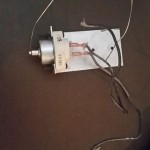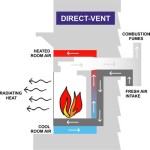French Limestone Fireplace Mantel: An Enduring Statement of Elegance
The French limestone fireplace mantel stands as a testament to enduring elegance and timeless design. Throughout history, limestone has been favored for its natural beauty, durability, and versatility, making it a prime choice for architectural features. When incorporated into a fireplace mantel, French limestone elevates the ambiance of any room, imparting a sense of sophistication and warmth. This article delves into the characteristics, historical significance, design considerations, and maintenance aspects of French limestone fireplace mantels.
Limestone, a sedimentary rock composed primarily of calcium carbonate, is formed over millions of years through the accumulation of marine organisms and minerals on the seabed. The unique composition of limestone results in a variety of textures, colors, and patterns, each reflecting the geological history of its origin. The specific qualities of French limestone, quarried from regions renowned for their rich deposits, contribute to its distinct appeal in fireplace mantel design.
The use of limestone in architectural designs dates back to ancient civilizations. Its prevalence in iconic structures across Europe, including castles, cathedrals, and manor houses, underscores its enduring appeal. French limestone, in particular, has been prized for its fine grain, consistent color, and ease of carving. The artisans of past centuries employed limestone extensively in fireplace mantels, showcasing their mastery of sculpting intricate details and decorative motifs. This historical legacy continues to influence contemporary designs, preserving the tradition of craftsmanship and timeless beauty.
Key Characteristics of French Limestone
French limestone boasts a range of characteristics that contribute to its suitability for fireplace mantels. Understanding these qualities is crucial for making informed decisions about design and maintenance.
1. Composition and Texture: French limestone typically exhibits a fine-grained texture, resulting in a smooth and refined surface. This texture allows for intricate carving and detailing, enabling the creation of elaborate designs and decorative elements. The density of the stone also affects its porosity, influencing its ability to absorb moisture and withstand environmental factors. Denser varieties of French limestone are more resistant to staining and weathering, making them ideal for fireplace surrounds.
2. Color Palette: The color palette of French limestone encompasses a range of warm, neutral tones, from creamy whites and light beiges to subtle grays and occasional hints of gold. These muted colors create a sense of tranquility and sophistication, complementing a wide range of interior design styles. The subtle variations in color within a single piece of limestone add to its natural character and visual appeal. The consistent color profile of French limestone allows for a cohesive look in larger installations, contributing to the overall harmony of the room.
3. Durability and Longevity: Limestone is a relatively durable material when properly maintained. Its resistance to heat and fire makes it a safe choice for fireplace mantels. While limestone is porous, proper sealing can minimize its vulnerability to staining and moisture damage. With regular cleaning and maintenance, a French limestone fireplace mantel can retain its beauty and structural integrity for generations.
Design Considerations for French Limestone Fireplace Mantels
Designing a French limestone fireplace mantel requires careful consideration of various factors, including architectural style, room size, and personal preferences. The mantel should seamlessly integrate with the existing décor and enhance the overall ambiance of the space.
1. Architectural Style: The architectural style of the room should guide the design of the fireplace mantel. In traditional settings, ornate mantels with intricate carvings and classical motifs are often appropriate. For more contemporary spaces, simpler designs with clean lines and minimalist details may be preferred. French limestone can be adapted to various architectural styles, from grand and elaborate to understated and elegant. The key is to choose a design that complements the existing features of the room.
2. Mantel Dimensions and Proportions: The dimensions of the fireplace mantel should be carefully considered in relation to the size of the room and the proportions of the fireplace opening. An oversized mantel can overwhelm a small room, while an undersized mantel may appear insignificant in a large space. The height, width, and depth of the mantel should be balanced to create a visually pleasing focal point. The proportions of the mantel should also complement the dimensions of the firebox, ensuring a harmonious relationship between the fireplace and its surrounding structure.
3. Detailing and Ornamentation: The level of detailing and ornamentation on a French limestone fireplace mantel can significantly impact its overall aesthetic. Intricate carvings, such as floral motifs, scrolls, and geometric patterns, can add a touch of elegance and sophistication. Simpler designs may feature clean lines, beveled edges, or subtle textures. The choice of detailing should reflect the architectural style of the room and the desired level of visual complexity. The craftsmanship and quality of the carving will also contribute to the overall appeal of the mantel.
Maintenance and Care of French Limestone Fireplace Mantels
Proper maintenance and care are essential for preserving the beauty and longevity of a French limestone fireplace mantel. Regular cleaning and sealing can protect the stone from staining and damage, ensuring that it retains its elegance for years to come.
1. Regular Cleaning: Routine cleaning is crucial for removing dust, dirt, and soot from the surface of the limestone. Use a soft, dry cloth to gently wipe down the mantel on a regular basis. For more stubborn dirt, a mild soap solution and a soft sponge can be used. Avoid using harsh chemicals or abrasive cleaners, as they can damage the surface of the stone. Always rinse the mantel thoroughly with clean water and dry it completely after cleaning.
2. Sealing: Sealing the limestone can help protect it from staining and moisture damage. A penetrating sealer will create a barrier that prevents liquids from seeping into the stone. Choose a sealer specifically designed for natural stone and follow the manufacturer's instructions carefully. Reapply the sealer periodically, as needed, to maintain its protective properties. The frequency of sealing will depend on the porosity of the stone and the level of exposure to liquids.
3. Stain Removal: In the event of a stain, prompt action is essential. Blot the stain immediately with a clean cloth to prevent it from soaking into the stone. For oil-based stains, a poultice of baking soda and water can be applied to draw out the oil. For water-based stains, a commercial stain remover designed for natural stone may be effective. Always test any cleaning product in an inconspicuous area first to ensure that it does not damage the limestone. Avoid using acidic cleaners, such as vinegar or lemon juice, as they can etch the surface of the stone.
French limestone fireplace mantels represent a fusion of natural beauty, historical significance, and enduring design. Their unique characteristics, including their fine grain, warm color palette, and durability, make them a prized addition to any home. By carefully considering design elements and adhering to proper maintenance practices, homeowners can ensure that their French limestone fireplace mantel remains a captivating focal point for generations.
The selection of a French limestone fireplace mantel involves a nuanced understanding of its inherent qualities and the specific requirements of the space it will inhabit. Architects, interior designers, and homeowners alike can leverage this knowledge to curate an environment that resonates with both aesthetic refinement and enduring structural integrity.
Furthermore, the ethical sourcing of the limestone contributes to the overall value and appeal of the mantel. Opting for suppliers who adhere to sustainable quarrying practices ensures that the beauty of the mantel is not achieved at the expense of environmental responsibility. This commitment to sustainability aligns with contemporary values and enhances the long-term significance of the investment.
The installation of a French limestone fireplace mantel is best entrusted to skilled professionals who possess the expertise to handle the delicate material and ensure proper structural support. Precise measurements, careful handling, and meticulous attention to detail are essential for achieving a seamless and visually appealing installation. A well-executed installation not only enhances the aesthetic appeal of the mantel but also ensures its safety and longevity.

French Limestone Fireplace Mantle Marvelous Marble

French Limestone Fireplace Mantel Traditional Philadelphia By Pascale Studio Houzz Au

French Provincial Stone Fireplace Surrounds And Mantels

Marble Fireplaces Classic French Limestone Fireplace Mantel Mfp 2204 Fine S Gallery Llc

Gray Interiors French Fireplace Country Vintage

French Limestone Fireplace Surround In New Jersey Marvelous Marble

18th Century French Limestone Mantel Piece Piet Jonker

Marble Fireplaces Classic French Limestone Fireplace Mantel Mfp 2204 Fine S Gallery Llc

A French Country Home Limestone Fireplace Happy Haute

Serendipity Refined Blog French Replica Limestone Fireplace Mantel Surround
Related Posts








